CARMEN MCRAE / “Dear Ruby”
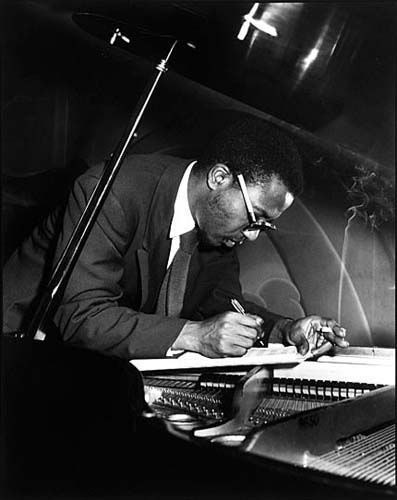
After Duke, Thelonious Sphere Monk is the greatest composer in jazz. His music continues to be necessary if one wants to consider oneself serious about jazz. Sometimes half-seriously, half-jokingly referred to as the high priest of bebop, Monk was the man; the one who figured out how to take the profusion of notes that was characteristic of most bebop tunes and reduce them to their skeletal essence. As the architect of bebop, Monk not only figured out the structure, he figured out how to compose for the idiom and it is signficant that Monk was able to craft ballads as well as uptempo tunes.
“Ruby, My Dear” is one of the first songs I fell always in love with—to this day it remains my main reference for a jazz ballad. Hearing it as an impressionable teenager, I imagined finding my “Ruby,” my beautiful woman who would touch all up inside me, find the soft of me and make me glad she revealed a part of me that I was not fully aware even existed.
I remember. It was a in the early sixties, a Saturday. I was listening to Larry McKinley’s "This Is Jazz" program on radio station WYLD. Three to 7pm weekly, I listened intently and received a virtual PhD in modern jazz.
Larry covered it all. Larry introduced me to Monk. I bought Monk records. I posted a big poster of Monk Underground, sitting at a piano in a basement with a assault rifle slung on his back and other memorabilia of the French resistance from World War II including a Nazi tied-up in the corner.
Monk with Art Blakey. Monk with Sonny Rollins. Monk with John Coltrane. Monk. Monk. Monk.
When I first heard Monk's important composition, “Ruby, My Dear” Coleman Hawkins was on tenor and impressed me in a way no jazz ballad had previously moved me. (Availalbe on a new Thelonious Monk compilation: The Complete 1957 Riverside Recordings.) Hawk was the dean of jazz tenor, indeed, in 1938 he had established the tenor as the major horn in jazz. Up until Coleman’s version of “Body and Soul,” the trumpet had been the major solo instrument but after that the onslaught of wailing tenors began and there was no stopping it.
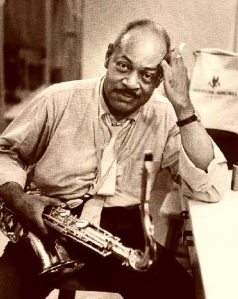
Coleman Hawkins seemed like he fit right in with Monk. As I studied more I found out that it was a special pairing. Coleman was from an earlier generation and was not a major bebop player, while Monk was “the” young turk breaking all the old rules and creating quirky and seemingly off-beat music. Though he was decades older, Coleman championed the youngsters, hired them on gigs, gave many of them their first recording opportunities, and from time to time appeared as a guest on their recordings as the young men began coming into their own. Hawkins had been particularly fond of Monk.
Monk always made me laugh the way he played the piano. Hitting the keys hard. Funny rhythms, like stumbling down the stairs but instead of falling catching yourself at the last minute and landing solidly on your feet. Monk’s music always seemed to beautifully resolve itself even though sometimes you couldn’t tell where it was going or couldn’t see how Monk was going to make the melody work but he always did.
From that first hearing of Monk and Hawk doing Ruby, I was hooked on Monk and hooked on “Ruby.”
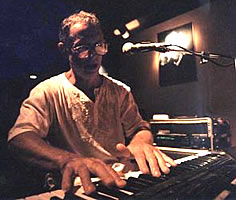
Hugo Fattoruso is a jazz pianist from Uruguay. What I dig about his version is the impressionistic quality. At first you don’t see “Ruby, My Dear” and then like a fog lifting in the morning sunlight, gradually the melody comes clear, but it’s gradual. Hugo has a very un-Monk approach to the piano, a lot of rubato embellishments where Monk had definite rhythms and strategically placed notes rather than the cascade of notes Fattoruso uses. (Available on Rattoruso's album, Ciencia Fictiona.)
If you keep the theme in mind, Fattoruso’s variations roll across the hills and valleys of the melody, revealing while simultaneously concealing, a sensuous dance with scarf’s through which we get fleeting glances of flesh.
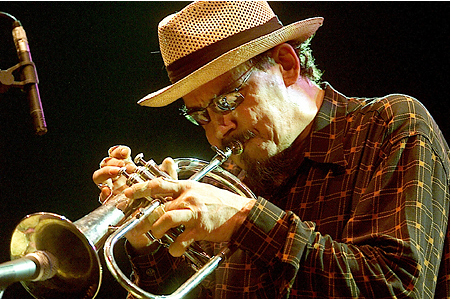
Trumpeter Jerry Gonzalez once again proves his mettle as both an interpreter of Monk’s music but also as a ballad player par excellence. With only the backing of wonderful Larry Willis stroking the piano, Gonzalez offers a touching portrait. His brass sound is both warm and also a little tart, giving an edge to the proceedings that keeps it from becoming overly sweet. (Available on Gonzalez's album, Pensativo.)
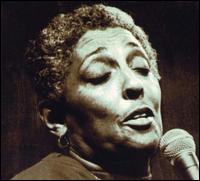
Carmen McRae is the featured version for two reasons. One, she sings the hell out of this. Indeed, not just “Ruby, My Dear” but also a whole raft of Monk tunes to which lyrics have been fitted for the album Carmen Sings Monk. The album as a whole and this version of “Ruby, My Dear” in particular is an exhilarating summation of Carmen’s consummate artistry as a jazz vocalist—indeed, she practically re-defines Monk’s music as a suitable vehicle for vocalists.
No one had ever attempted an album’s worth of vocal interpretation of Monk. Only a handful of other vocalists could even have dreamed of pulling this off with the success that Carmen McRae achieves. Listen to how she shapes the notes, how she articulates the lyrics thereby giving us a lesson in both making the words meaningful and at the same time making the words musical.
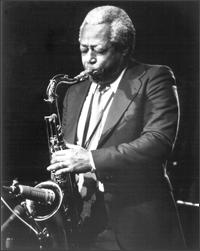
Finally, Charlie Rouse, who played tenor with Monk for over a decade, gifts us with a concert recording from shortly before Rouse died (Epistrophy). There is not a weak note on the album. From the opening notes, it’s clear Rouse knows “Ruby” in ways most of us don’t and reveals to us aspects of the melody that have not previously been apparent.
This is what great jazz is all about: interpreting reality and giving us new ways to look at timeless themes. The significance of Rouse's offering is in Rouse's timing, and in his tone, and in the imagination he uses to put notes together in sonicly significant sequences.
That’s George Cables working the piano, covering more ground in one chorus than the majority of pianists do in a whole night of playing. But then Rouse re-enters and reminds us just how well he knows “Ruby.”
I have at least six other versions I like but this grouping (Monk with Hawk, Hugo Fattoruso, Jerry Gonzalez with Larry Willis, Carmen McRae, and Charlie Rouse) gives us an encyclopedic survey of one of the most beautiful ballads in modern music.
—Kalamu ya Salaam
This entry was posted on Monday, July 28th, 2008 at 2:20 am and is filed under Cover. You can follow any responses to this entry through the RSS 2.0 feed. You can leave a response, or trackback from your own site.
One Response to “CARMEN MCRAE / “Dear Ruby””
August 3rd, 2008 at 1:30 pm
Perhaps I am a bit biased…I am a HUGE Carmen McRae fan. Her style was so elegant…diction so perfect. I LOVE this version of Ruby my Dear. I don’t see how it can get any better than this. It would make Ruby proud.
Leave a Reply
| top |